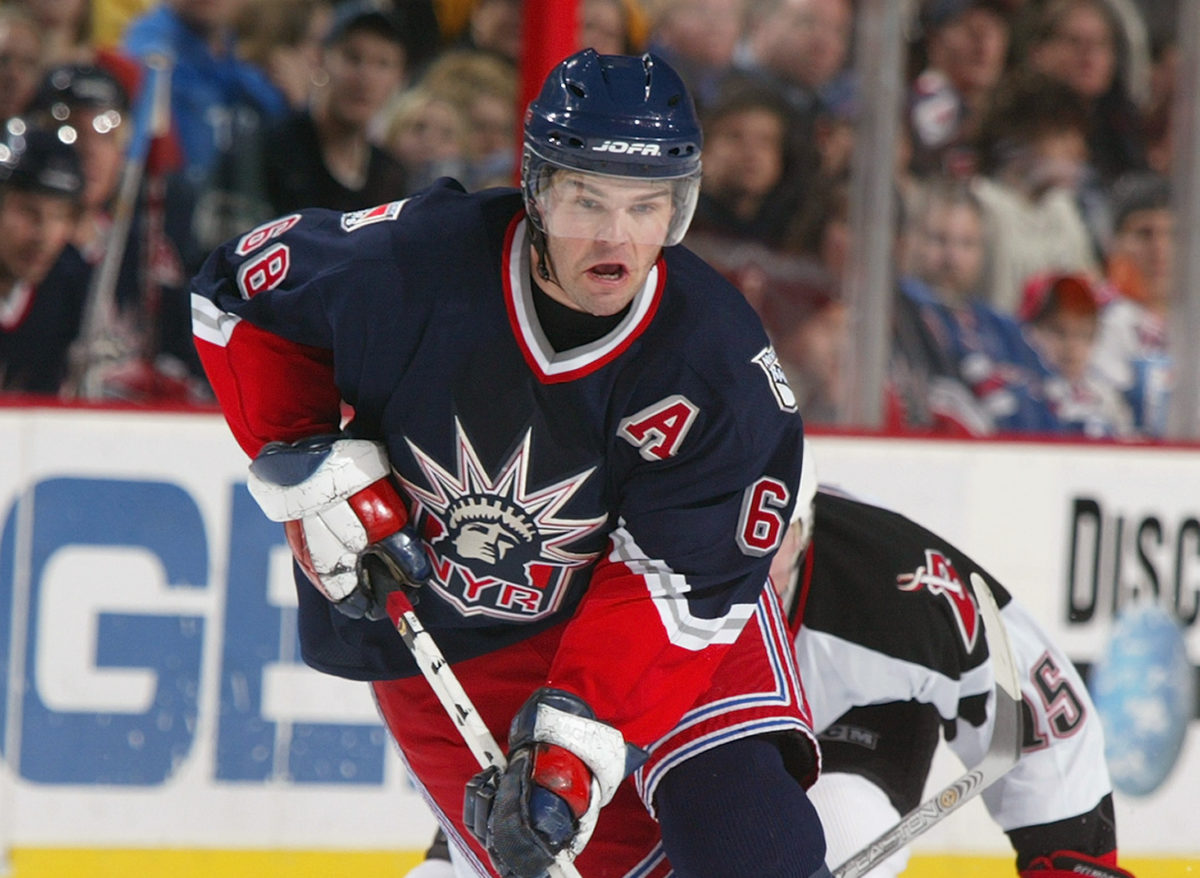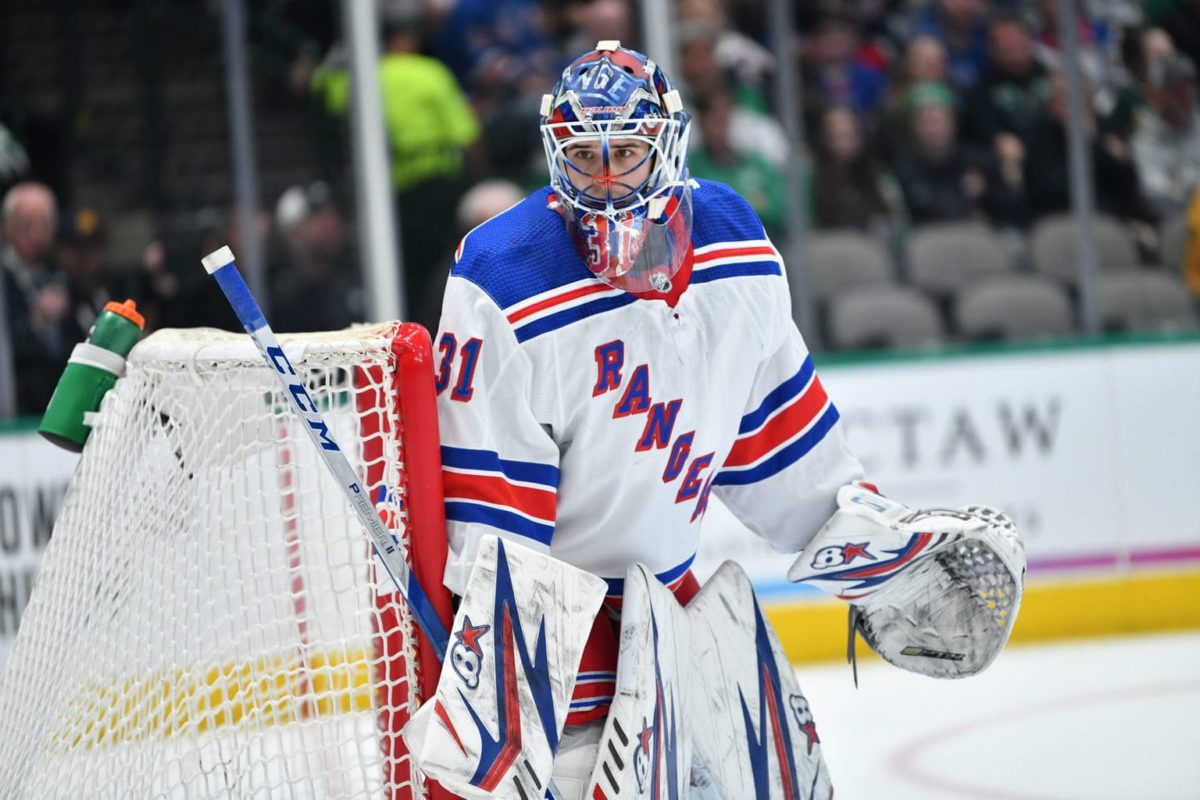In 2020-21, the New York Rangers find themselves in a similar position to the one they were in entering the 2005-06 season. The 2005-06 Rangers helped turn the franchise around and set them in the right direction for years to come. That year, after many disappointing seasons, New York finally broke through and made the postseason. (from ‘It’s No Misprint: Rangers Clinch a Playoff Berth,’ New York Times, 04/05/2006)
15 years later, that season is still a very important one and one that deserves to be revisited.
Acquiring Key Players
During the 2003-04 season, the Rangers acquired Jaromir Jagr from the Washington Capitals in exchange for Anson Carter, as Washington looked to unload the star winger’s salary. Jagr had 15 goals and 14 assists in 31 games with the Blueshirts that season. New York missed the playoffs for the seventh consecutive season, but the trade proved to be a great move for the Rangers.

Following the 2004-05 NHL lockout, the Rangers made two key acquisitions to play alongside Jagr, signing Michael Nylander and Martin Straka. The three formed one of the most dominant lines in the NHL during the 2005-06 season and improved the team’s culture. The Rangers began to expect to win games and make the postseason.
Nylander centered a line with Jagr and Straka, and the three became unstoppable as their chemistry grew throughout the season. They also all played on New York’s first power-play unit. Straka finished with 22 goals and 54 assists in 82 games, while Nylander finished with 23 goals and 56 assists in 81 games. He set then career-highs in both goals and assists, but he would go on to surpass both marks during the 2006-07 season with the same linemates.
Straka and Nylander were both excellent, but Jagr was historically great for the Blueshirts that season. He used his strength and ability to shield the puck to become the team’s top playmaker while using his quick hands and great shot to also become the team’s top goal-scorer. He played in all 82 regular-season games, finishing with 54 goals and 69 assists. His 123 points and 54 goals remain Rangers’ single-season records.
Thanks in large part to Jagr, the Rangers scored 250 goals, including 83 on the power play, during the 2005-06 season after they finished with just 206 goals, including 46 on the power play, during the 2003-04 season.
Rise of Young Players
In addition to their key acquisitions, the Rangers got a huge boost from the play of a few of their young prospects. Despite entering the season as a backup to Kevin Weekes, New York’s seventh-round draft pick in 2000, Henrik Lundqvist, quickly proved that he deserved the starting job with spectacular performances and highlight-reel saves.

Lundqvist proved that his hot start wasn’t a fluke as he remained consistent and reliable throughout the season. He finished with a record of 30-12-9 in 53 games, a .922 save percentage and a 2.24 goals against average. New York was very aggressive offensively that season and relied heavily on him. He delivered and played a huge role in the team’s dramatic improvement from the 2003-04 season, as the Rangers won 44 games in 2005-06 after winning just 27 in 2003-04.
The Rangers also got a boost from one of their young forwards, who like Lundqvist, was a late draft pick. Petr Prucha was selected by New York in the eighth round of the 2002 NHL Draft. He briefly played for the Hartford Wolf Pack of the AHL during 2005-06 but quickly earned ice time with the Rangers for his goal-scoring ability and grit. He helped improve the Rangers’ already impressive power-play unit and finished the season with six power-play goals. Overall he had 30 goals and 17 assists despite playing in just 68 games.
The success of young players helped propel the Rangers into the postseason, and while they were swept in the first round in 2006, the team carried a winning mentality into the next season as they transitioned into contenders. From 2005-06 to 2016-17 the Blueshirts made the postseason in 11 of their 12 seasons.
Similarities to the 2020-21 Rangers
The 2005-06 team has many similarities to the team’s current roster, and if the Rangers play to their potential this season, they could make the playoffs. This team has star players in Artemi Panarin and Mika Zibanejad, who were both fantastic last season. The Blueshirts will need another excellent season from both of them this season.
New York will also have to rely on Igor Shesterkin, who will have to play well given the team’s youth and lack of depth on defense. The young goalie showed off his potential during the few games he played in last season and if he stays healthy, this could be his breakout season.

The Rangers have plenty of other skilled young players as well, including defensemen Adam Fox and Ryan Lindgren. Fox and Lindgren became the team’s top defense pair last season and both will be relied on once again this season.
At forward the Rangers have young wingers Filip Chytil, Kaapo Kakko and Alexis Lafreniere all looking to contribute and earn ice time. In addition to the young players on the roster, New York has plenty of prospects in their system.
The same was true for New York during the 2005-06 season and the Rangers intelligently held on to them. Many of those prospects became key pieces of the team’s future, including Ryan Callahan, Brandon Dubinsky, Dan Girardi and Marc Staal.
This season, it will be a difficult road to the postseason for the Rangers in a division loaded with talent. However, New York’s stars and talented young players could make this season a memorable one as the Blueshirts look to build a winning culture. Even if they fail to make the playoffs this season, the Rangers’ stars, skilled young players and prospects make their future a bright one.